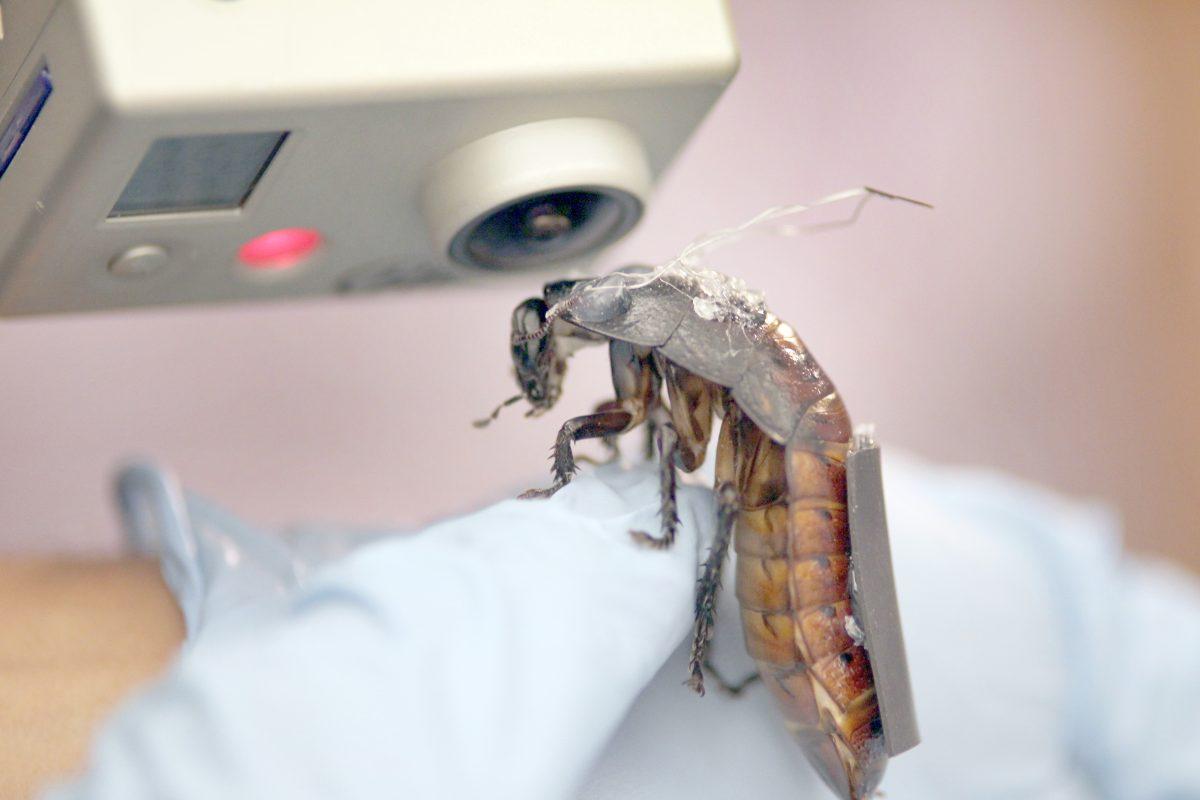N.C. State researchers will conduct experiments with robots this semester to simulate how cock roaches might be able to help with search and rescue operations.
If successful, the researchers will release cock roaches into areas such as collapsed buildings to map out the environment and locate victims.
According to Alper Bozkurt, electrical and com puter engineering assistant professor, the cock roaches are actually remotely controlled biobots — a combination of machinery and nature — be cause they carry an electronic board in the form of a small chip on their backs. The board, known as a backpack, contains a microcontroller (a simple form of a computer), a radio transmitter and elec trodes inserted into the antennae.
The radio, along with the future addi tion of microphone technology to the backpack, will allow victims of disasters to communicate with those on the outside through radio waves, Bozkurt said. The researchers plan to use a breed of cockroaches known as Madagascar hissing cockroaches for their experiments, which can reach a length of two to three inches long once fully grown. Their size allows them to support the weight of the backpack, said Edgar Lobaton, electrical and computer engineering assistant professor.
Researchers can control the movement of the cockroaches by sending tiny pulses from remote controls to the insect tissue, which thereby forms an electric field which creates an action potential to in terphase the nervous system, according to Bozkurt.
“Basically you have these wires that go and con nect directly to the antennae and remotely you send a signal…and then it gets interpreted by the backpack, and then it sends the right signals to the antennae,” Lobaton said. “You don’t really control each of their legs to move right or left, you just kind of make it feel like something is in front of them…it’s more of like a natural response to predators and things like that. It’s more like riding a horse than anything else.”
Algorithms to translate the movement of the cockroaches into a map of the given area, as well as some hardware, are still under development, Lobaton said.
The project originated from the idea of implant ing medical technology into insects, according to Bozkurt.
Bozkurt said he used moths at first, but they were difficult to control.
“Cockroaches cannot only climb and move in small spaces, but they also move in an autonomous way. You don’t control them like robots,” Bozkurt said.
Mihail Sichitiu, electrical and computer engineer ing associate professor, is network systems expert and will be collaborating with Bozkurt and Lobaton on the research as well, according to Bozkurt. The interconnectivity of the cockroaches is key because if the insect is under a lot of rubble, the radio waves can bounce off walls and reach other insects nearer to the surface through a “sensor network,” which thereby magnifies the sound until it is heard by the closest first responder.
“It would be like a game of telephone,” Bozkurt said.
Experiments with the cockroaches will not take place for another year, but Wolfbots, which are robots designed by undergraduate students, will attempt to mimic the behavior of cockroaches in the field, according to Lobaton.
“We try to understand these natural instincts and use them in our research,” Bozkurt said. This includes examining areas such as the times of day the insects are most active and how they react when experimenters turn the lights off.
The manipulation of these insects, though, raises the time-old question of ethics.
“The ethics of domestication has been out there,” Bozkurt said. “We have used dogs, bees, etc., for thousand of years, so having a partnership with animals is not a new thing.”
In terms of harming the insect, Bozkurt said they do make some incisions in the antennae in order to attach the electrodes during the adult stage of development, but Lobaton said the procedure is not very “invasive.”
Insects lack the pain receptors found in humans, which suggests they don’t perceive pain like we do, Bozkurt said. The electrodes can be removed once the experiments are complete, as well, and do not kill the insects, either, like some people do when they find cockroaches in their home.
“All insects have a reason to be here, even a cock roach, which can be the most disgusting insect to humans, but we tell them, ‘Look, they could save your life,’” Bozkurt said. “We spend millions of dollars and cannot replicate them. These are amaz ing creatures so be respectful to them, especially in your homes.”








